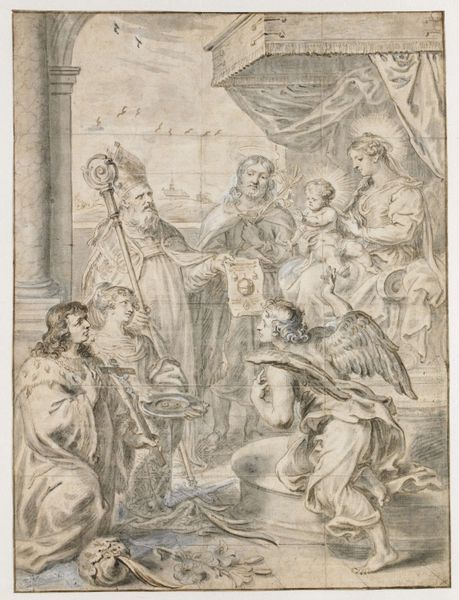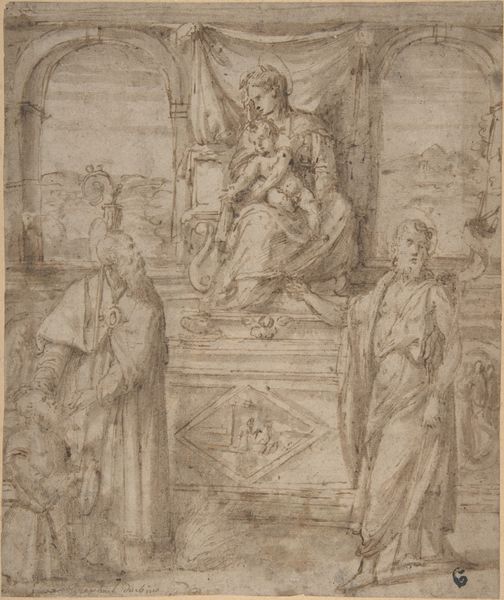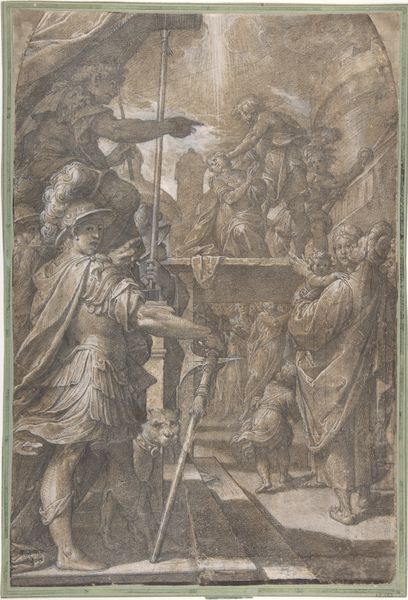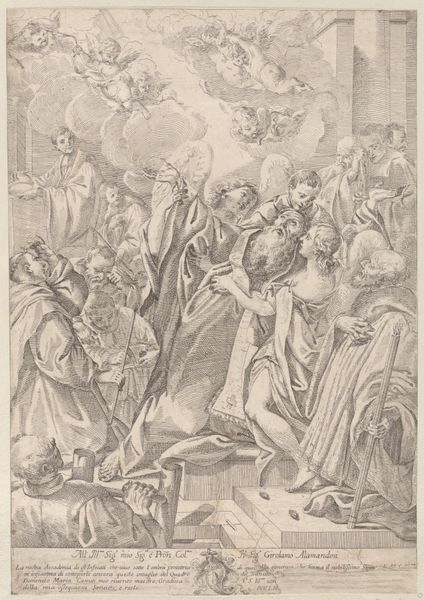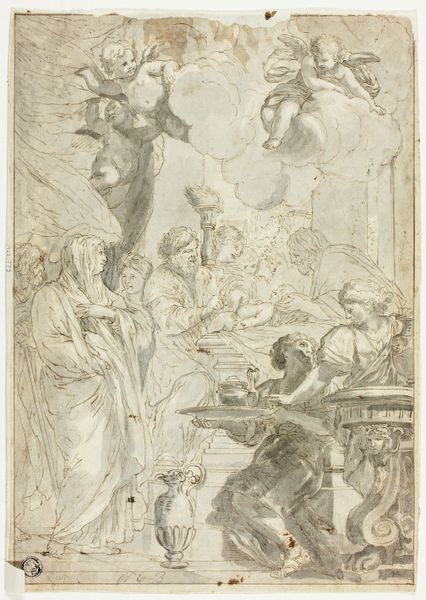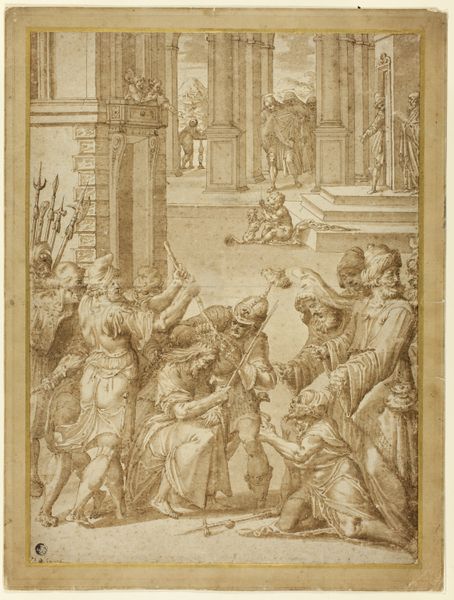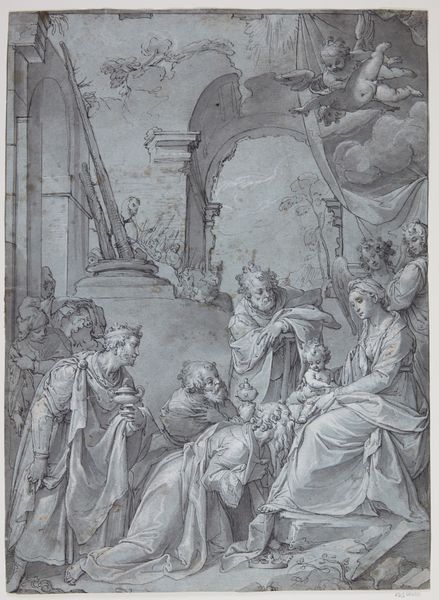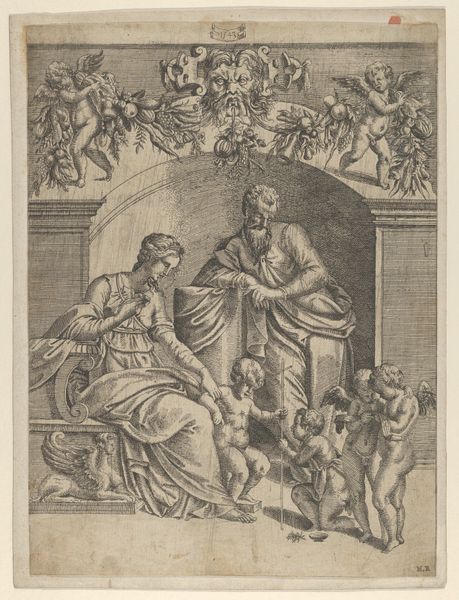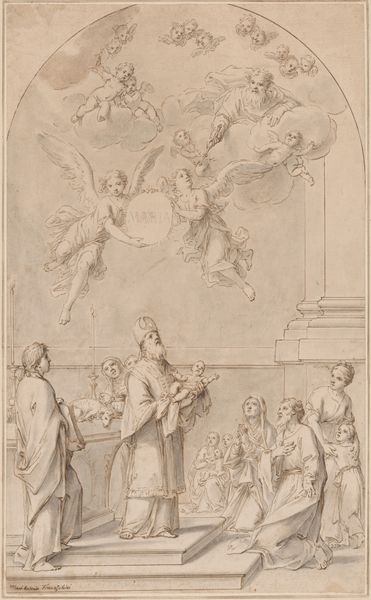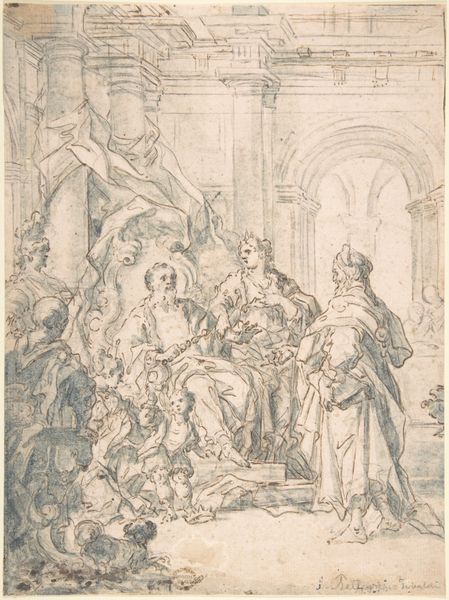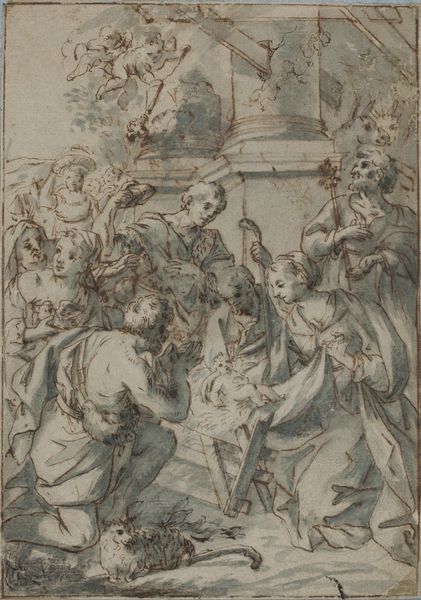
drawing, print, ink, pencil
#
drawing
#
narrative-art
# print
#
pen sketch
#
pencil sketch
#
figuration
#
11_renaissance
#
ink
#
ink drawing experimentation
#
pencil
#
pen work
#
history-painting
#
academic-art
#
italian-renaissance
Dimensions: 10-5/16 x 7 in. (26.2 x 17.8 cm)
Copyright: Public Domain
Editor: Here we have "Adoration of the Magi," a drawing in ink and pencil from sometime in the 16th century, currently held at the Met. The sketch-like quality makes me wonder what the artist intended to explore. What are your thoughts on the societal context of this piece? Curator: Given its subject and era, we can place this drawing within a rich history of religious art serving specific social and political purposes. Adoration scenes were, of course, devotional, but also increasingly tied to displays of wealth and power by patrons and rulers, connecting them to biblical narratives and asserting their legitimacy. Editor: How would the act of presenting this story influence the patrons? Curator: The scene itself highlights themes of gift-giving, kingship, and divine blessing. Consider how prominently the magi are displayed, their finery, their rich gifts. How might this representation have bolstered the standing of the patron commissioning such a work? Were they, in a way, attempting to link themselves with the virtuous kings? Editor: So, commissioning art wasn’t always purely religious; it also intertwined with the patron's standing in society. Was the public as accepting then of wealthy displays, perhaps connecting to "virtuous kings," versus how that might play today? Curator: Absolutely. Understanding the cultural norms of the time is essential. Public displays of wealth were often expected, tied to civic duty and patronage of the arts. Think about it – would our view of this work shift if we learned it was created for private contemplation versus public display? How might its message change depending on who was meant to see it? Editor: That’s a fantastic point! Considering the intent behind the display brings a new depth to analyzing art like this. Thanks for illuminating that. Curator: My pleasure. The power of art often lies in its intersection with history and societal forces. Examining these relationships deepens our appreciation.
Comments
No comments
Be the first to comment and join the conversation on the ultimate creative platform.
